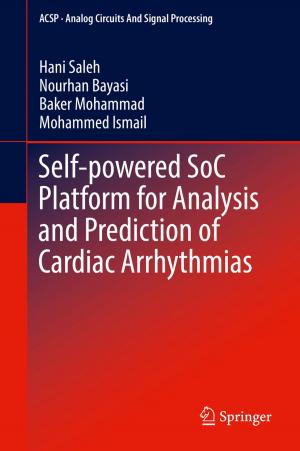Aviation Security, Privacy, Data Protection and Other Human Rights: Technologies and Legal Principles
Nonfiction, Reference & Language, Law, Media & the Law, International| Author: | Olga Mironenko Enerstvedt | ISBN: | 9783319581392 |
| Publisher: | Springer International Publishing | Publication: | September 18, 2017 |
| Imprint: | Springer | Language: | English |
| Author: | Olga Mironenko Enerstvedt |
| ISBN: | 9783319581392 |
| Publisher: | Springer International Publishing |
| Publication: | September 18, 2017 |
| Imprint: | Springer |
| Language: | English |
This book sheds light on aviation security, considering both technologies and legal principles. It considers the protection of individuals in particular their rights to privacy and data protection and raises aspects of international law, human rights and data security, among other relevant topics. Technologies and practices which arise in this volume include body scanners, camera surveillance, biometrics, profiling, behaviour analysis, and the transfer of air passenger personal data from airlines to state authorities.
Readers are invited to explore questions such as: What right to privacy and data protection do air passengers have? How can air passenger rights be safeguarded, whilst also dealing appropriately with security threats at airports and in airplanes? Chapters explore these dilemmas and examine approaches to aviation security which may be transferred to other areas of transport or management of public spaces, thus making the issues dealt with here of paramou
nt importance to privacy and human rights more broadly. The work presented here reveals current processes and tendencies in aviation security, such as globalization, harmonization of regulation, modernization of existing data privacy regulation, mechanisms of self-regulation, the growing use of Privacy by Design, and improving passenger experience.
This book makes an important contribution to the debate on what can be considered proportionate security, taking into account concerns of privacy and related human rights including the right to health, freedom of movement, equal treatment and non-discrimination, freedom of thought, conscience and religion, and the rights of the child. It will be of interest to graduates and researchers in areas of human rights, international law, data security and related areas of law or information science and technology.
I think it will also be of interest to other categories (please see e.g. what the reviewers have written)
"I think that the book would be of great appeal for airports managing bodies, regulators, Civil Aviation Authorities, Data Protection Authorities, air carriers, any kind of security companies, European Commission Transport Directorate, European Air Safety Agency (EASA), security equipment producers, security agencies like the US TSA, university researchers and teachers."
"Lawyers (aviation, privacy and IT lawyers), security experts, aviation experts (security managers of airports, managers and officers from ANSPs and National Aviation Authorities), decision makers, policy makers (EASA, EUROCONTROL, EU commission)"
This book sheds light on aviation security, considering both technologies and legal principles. It considers the protection of individuals in particular their rights to privacy and data protection and raises aspects of international law, human rights and data security, among other relevant topics. Technologies and practices which arise in this volume include body scanners, camera surveillance, biometrics, profiling, behaviour analysis, and the transfer of air passenger personal data from airlines to state authorities.
Readers are invited to explore questions such as: What right to privacy and data protection do air passengers have? How can air passenger rights be safeguarded, whilst also dealing appropriately with security threats at airports and in airplanes? Chapters explore these dilemmas and examine approaches to aviation security which may be transferred to other areas of transport or management of public spaces, thus making the issues dealt with here of paramou
nt importance to privacy and human rights more broadly. The work presented here reveals current processes and tendencies in aviation security, such as globalization, harmonization of regulation, modernization of existing data privacy regulation, mechanisms of self-regulation, the growing use of Privacy by Design, and improving passenger experience.
This book makes an important contribution to the debate on what can be considered proportionate security, taking into account concerns of privacy and related human rights including the right to health, freedom of movement, equal treatment and non-discrimination, freedom of thought, conscience and religion, and the rights of the child. It will be of interest to graduates and researchers in areas of human rights, international law, data security and related areas of law or information science and technology.
I think it will also be of interest to other categories (please see e.g. what the reviewers have written)
"I think that the book would be of great appeal for airports managing bodies, regulators, Civil Aviation Authorities, Data Protection Authorities, air carriers, any kind of security companies, European Commission Transport Directorate, European Air Safety Agency (EASA), security equipment producers, security agencies like the US TSA, university researchers and teachers."
"Lawyers (aviation, privacy and IT lawyers), security experts, aviation experts (security managers of airports, managers and officers from ANSPs and National Aviation Authorities), decision makers, policy makers (EASA, EUROCONTROL, EU commission)"















